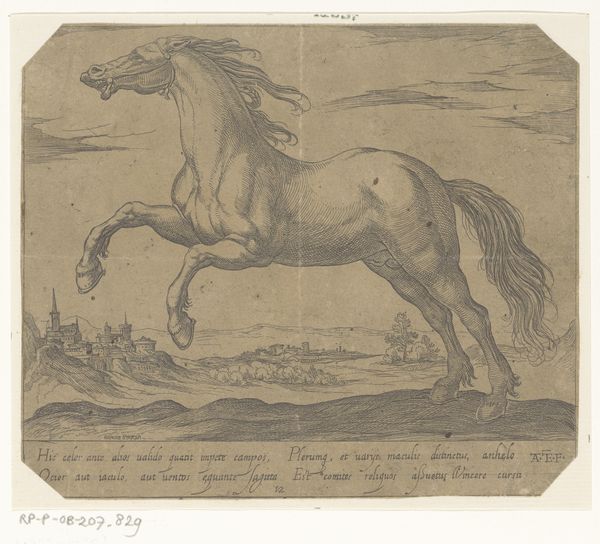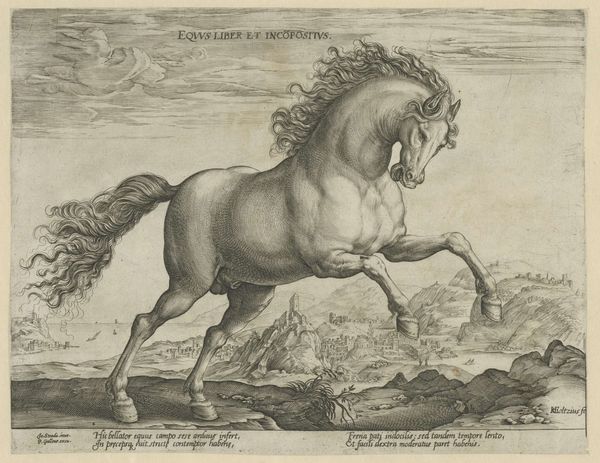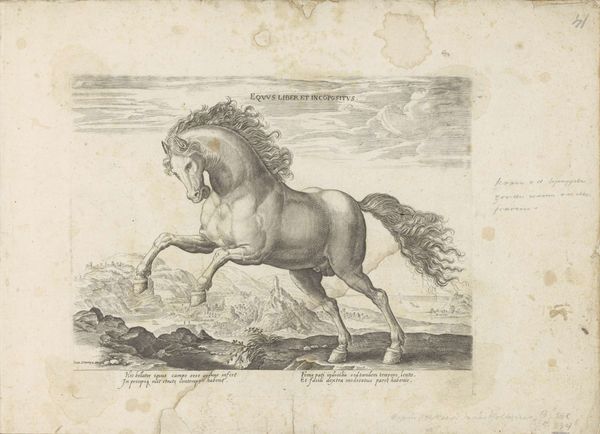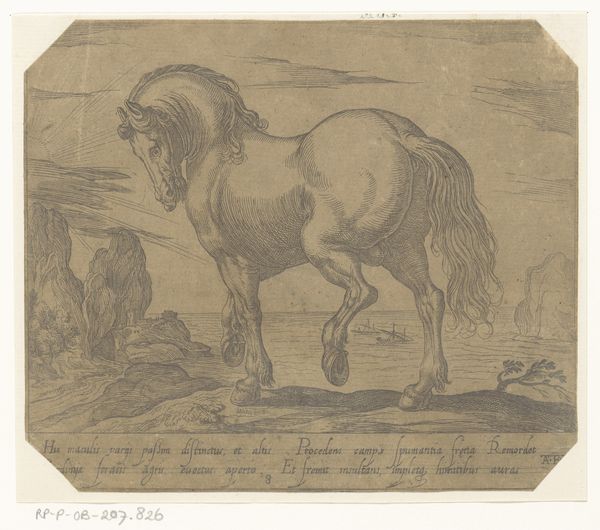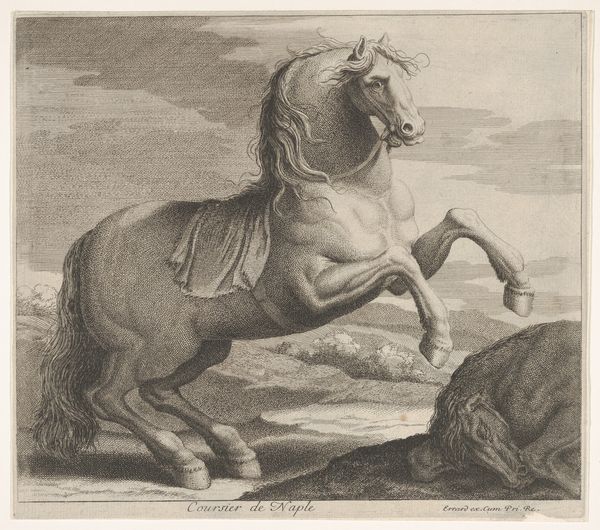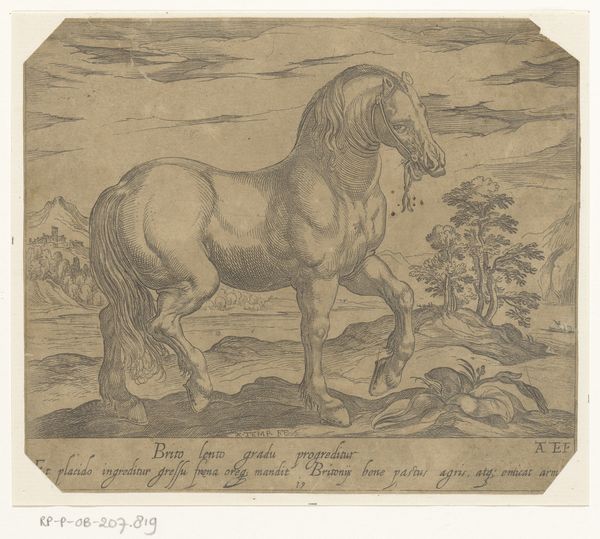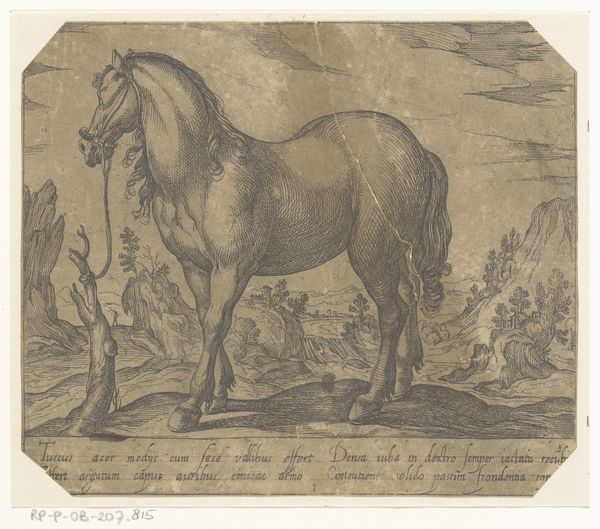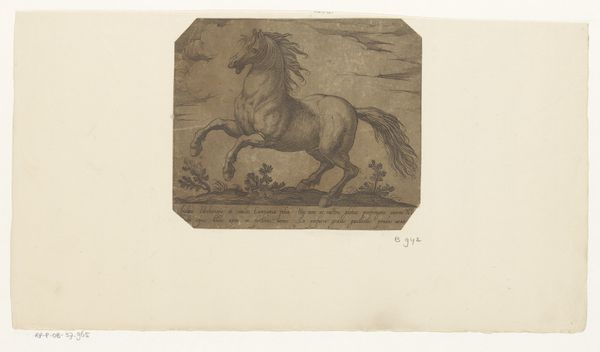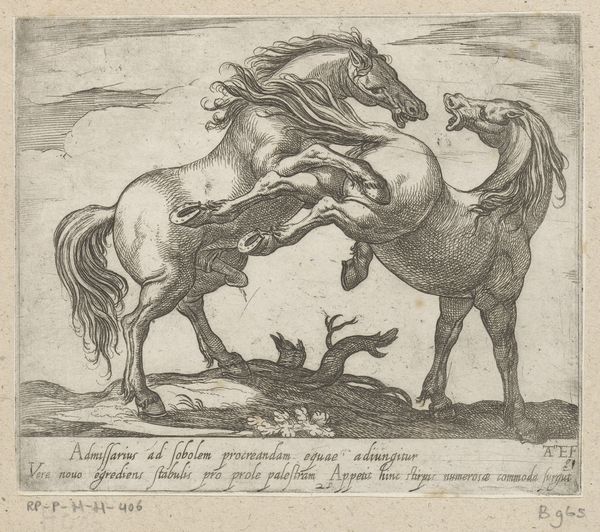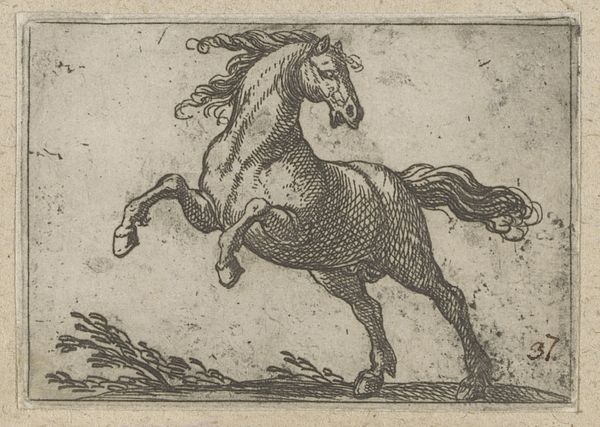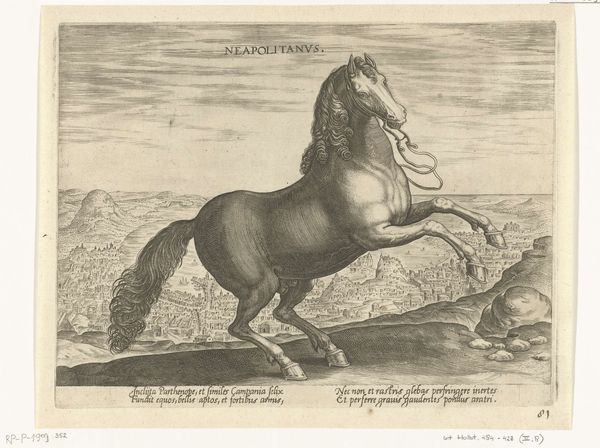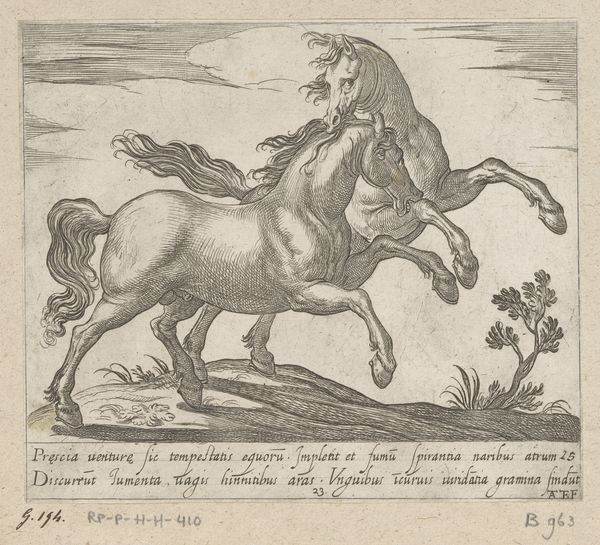
print, engraving
#
baroque
#
animal
# print
#
landscape
#
figuration
#
horse
#
engraving
Dimensions: height 141 mm, width 165 mm
Copyright: Rijks Museum: Open Domain
This print of a rearing horse was made by Antonio Tempesta sometime before 1630. The medium is etching, a printmaking process that relies on acid to bite lines into a metal plate. The artist covers the plate with a waxy ground, then scratches away lines to expose the metal. When dipped in acid, these lines are eaten away, allowing them to hold ink. Looking closely, you can see the characteristic texture of etching: a crisp, slightly irregular line, created by the corrosive action of the acid. This contrasts with engraving, where the lines are cut directly into the metal with a tool, resulting in a cleaner, more precise effect. Prints like this were essentially a reproductive medium; the image could be disseminated widely, and relatively inexpensively. Tempesta produced many such works, and his workshop would have relied on division of labor, with different hands contributing to the final product. Although "Steigerend paard naar rechts gewend" translates as "Rearing horse facing right," the work and its title speak to the burgeoning industrial practices of the period.
Comments
No comments
Be the first to comment and join the conversation on the ultimate creative platform.
